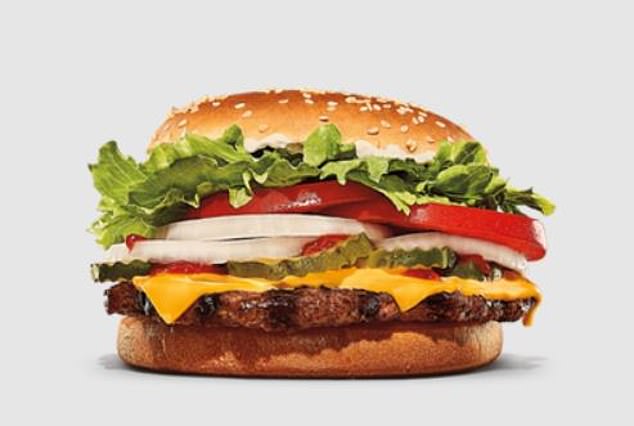Burger King, KFC, Pizza Hut, and Taco Bell have followed McDonald’s lead and stopped using fresh onions in their foods, citing them as the most likely source of a deadly E. coli outbreak in western states.
Yum Brands, which owns Taco Bell, Pizza Hut, and KFC restaurants, said in a statement that it has pulled onions from its menu ‘proactively’, noting that there has been no indication so far that anyone has become sick after eating from any of those restaurants.
It comes on the heals of a Colorado man’s death that investigators have tied to the McDonald’s Quarter Pounder, which includes onions.
So far, 10 are hospitalized and 49 have fallen sick after eating McDonald’s hamburgers in multiple Mountain West states.
Investigators are now trying to ascertain whether the onions that could be behind the wave of illnesses were distributed to grocery stores, suggesting that the outbreak could grow much larger.

The Burger King Whopper contains onions, though there is no indication yet that people have gotten sick from eating at a Burger King
California-based Taylor Farms recalled several yellow onion batches after the FDA highlighted the vegetable as the ‘likely source of contamination.’
McDonald’s said it would stop using the onions and has halted sales of Quarter Pounders at restaurants across Colorado, Nebraska, Utah, Wyoming, Idaho, Iowa, Missouri, Montana, Nevada, New Mexico, Kansas and Oklahoma.
A spokesperson for Yum Brands said: ‘As we continue to monitor the recently reported E. coli outbreak, and out of an abundance of caution, we have proactively removed fresh onions from select Taco Bell, Pizza Hut and KFC restaurants.
We will continue following supplier and regulatory guidance to ensure the ongoing safety and quality of our food.
At Taco Bell, onions are added to the beef mix in some items like the Crunchwrap Supreme and the beef burrito. Onions are also often used as toppings on the soft tacos and the Mexican Pizza.
At KFC, onions are typically added on request while at Pizza Hut, while many of the pizzas include onions, customers can ask for them to be excluded.
At Burger King, the Whopper (and the double and the junior versions) includes raw onions, as do the other cheeseburgers on the menu.
A spokesperson from Restaurant Brands International, which owns Burger King, said: ‘Despite no contact from health authorities and no indications of illness, we proactively asked our 5 percent of restaurants who received whole onions distributed by this facility to dispose of them immediately two days ago and we are in the process of restocking them from other facilities.’
Burger King owns roughly 6,960 restaurants across the US, and the latest recall affects more than 300 of them.
McDonald’s, meanwhile, has pulled Quarter Pounders from menues in about a fifth of its restaurants.
The company has halted the use of onions and quarter-pound beef patties in several states, including Colorado, Kansas, Utah, and Wyoming, as well as parts of Idaho, Iowa, Missouri, Montana, Nebraska, Nevada, New Mexico, and Oklahoma, while the investigation is ongoing, according to the CDC.
Taylor Farms, for its part, said none of the products had tested positive for the bacteria that kills up to a fifth of people who become sick, and that the recall was a precaution.
Four products were included in the recall: Peeled jumbo yellow onions, two types of diced fresh yellow onions and whole, peeled yellow onions.
Investigators have not ruled out McDonald’s hamburger patties as a potential source.
McDonald’s also said its beef patties are all cooked at a temperature of 175F, which would kill E. coli which cannot survive above 160F.
Sources say efforts to track the source of the outbreak have focused on the onions because the patties used in the Quarter Pounders in affected states had come from separate sources.
Symptoms of an E. coli infection usually begin about four days after eating contaminated food and may include diarrhea and intense stomach cramps.
It’s important to seek medical attention if these symptoms persist for more than two days, or if the person develops a fever over 102 degrees or shows signs of dehydration.
This article was originally published by a www.dailymail.co.uk . Read the Original article here. .


